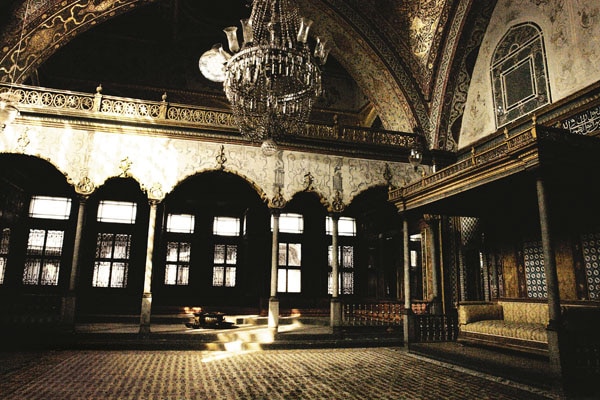
Crossroad of the World: Museum of Confluence
Walking through Orhan Pamuk's Istanbul
Huzun. The melancholy Turkish people feel about living in a grand past and frayed present. It envelopes Orhan Pamuk’s Istanbul.
Under the spell of the elegant sadness of his work, I expected to see a decaying city, once centre of the world, now past its prime; but found it pulsating with Ramadan lights, old European style buildings reborn as terrace cafés, bustling with young people, street musicians and of course bookstores selling Pamuk’s new book, Museum of Innocence.
Clearly, Istanbul as a guidebook was a dated idea. And yet in this city of many worlds — Christianity and Islam, Europe and Asia, East and West, weathered stone and shiny glass towers — rereading Pamuk on its identity crisis is educative and elevating. “Turkishness is about not feeling at home in the west,” Pamuk said at a book reading in Mumbai last year. “If I lose that I will lose my anger and my ethics.” He now spends most of the year at New York’s Columbia University, but writes in Turkish. Like Turkey, Pamuk is both Western and Eastern.
Every time you feel like you’ve got a fix on the city, Pamuk pops up in your head with his history of how many outsiders came in, understanding it sometimes, more often getting it totally wrong. Nowhere was this more evident than at the Pera Museum’s exhibit of paintings by 19th century Western travellers who, in brief visits, saw only Istanbul’s exotic Oriental side. Looking at the vivid canvasses of tortoise sellers, harems and belly dancers, one understands the “love-hate relationship with the western gaze” Pamuk talks about.
That relationship became more convoluted when President Ataturk cleansed Turkey of the Oriental part of its identity and fashioned a Western avatar, doing away with overt religion, dervishes, traditional clothes, even the fez.
Growing up in the new Turkish republic, Pamuk writes, “Except for the few moments when we were made to remember Her, God did not trouble us unduly.” In the here-and-now, the Ramadan we saw seemed nearly as grand as those celebrations during the Ottoman years that Westerners wrote about.
Tents in mosque front yards give the faithful a place where they can break their day-long fasts. The fasts aren’t forced: Craft fairs and blown-glass-whirling dervishes compete with Koran recitations; open-air cafés cheerfully serve food and alcohol all day under posters of the incumbent, right-wing AK Party, which forced bars to shut in Ankara.
Ara Guler’s sepia-tinted photographs, which dot Istanbul, occupy prime space at his Kafe Ara. The place is buzzing, filled with cool young Turks celebrating the city’s boom rather than being weighed down by the elegiac poverty of Guler’s photographs.
At the Hagia Sofia, a church that turned into a mosque, Islamic calligraphy exists alongside mosaics of Madonna and child, and, like the Sulemaniye Mosque, which towers over the city, is undergoing expensive renovation.
A cruise along the Bosphorus showcases the gorgeous wooden houses, the yalis, that the teenage Pamuk and his gang would drive up to and watch as they burned after years of neglect and family feuds. Many are now boutique hotels and expensive restaurants. The antique trams that Pamuk rode up and down the European area of Pera have been recently revived on a shorter route.
Close by, are the Pamuk apartments where the writer has spent most of his life and where many of his books are set. Museum of Innocence, recently translated into English, is also set here and explores a 25-year-long relationship from the seventies. He plans a museum to go with the book, which will house everyday objects from that time. Very probably it will be the star attraction on Pamuk’s Istanbul circuit. But it may also be the passing of the baton from Istanbul to Museum of Innocence, a love story that stretches into more recent times.
On our last day we treat ourselves to a trendy restaurant in the Ortakoy area. We wonder about the waiting television crews. Celebrity spotting? It turns out they are here to beam prayers from the adjoining mosque, on one of the last few days of Ramadan. There is a crowd along the Bosphorus waterfront: The pious are here to break their fasts; others are queuing up to enter a happening nightclub; still others just to admire the bridge that starts next to the mosque and ends in Asia. Just another night in the life of Istanbul.
Travellers’ Tips
- Turkish Airlines flies directly to Istanbul everyday from Delhi and Mumbai.
- Exchange rate: 1 Turkish Lira = Rs. 31.3.
- Istanbul has a modern and efficient tram system, buses and of course a wonderful ferry system. Be sure to take metered cabs.
- Being a touristy city there are budget options but equally there are luxury hotels. There are several budget hotels in the Sultahmet area and near Taksim.
Shopping List
The 13th century Grand Bazaar, with its 5,000 stores, winding lanes, fountains, mosque and restaurants, is like a treasure chest of all things Turkish — carpets, kilims, ceramics and antiques.
Must See
- Istanbul is European Capital of Culture for 2010. A mix of Turkish music, popstars and the opening of Pamuk’s real-life Museum of Innocence, is lined up for the year.
- A great audio guide will bring alive Topkapi Palace, that housed the Ottoman kings.
- While the Sulemaniye Mosque is like the reigning deity of Istanbul’s many mosques, the Rustampaca Mosque houses the most beautiful blue tiles. The overpowering Hagia Sofia blends Islamic calligraphy and Christian iconography.
- A slightly smaller enclosed market that ends into the Grand Bazaar, the Spice Bazaar sells dry fruits, spices and even old books.
- The main shopping drag, Istiklal Caddesi, has everything from top end European brands, to small stores selling Istanbul lithographs. Do check out Pasabahce, which sells pretty glassware.
(This story appears in the 05 February, 2010 issue of Forbes India. To visit our Archives, click here.)















